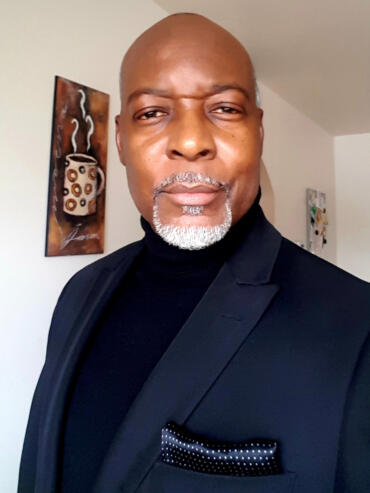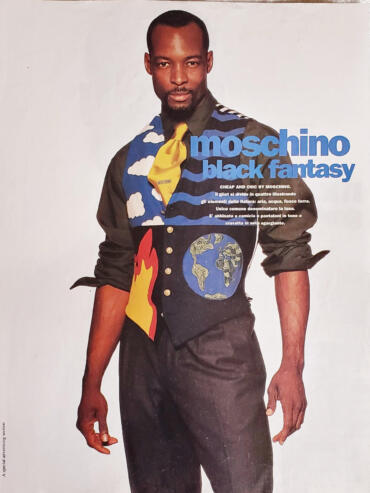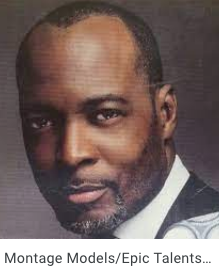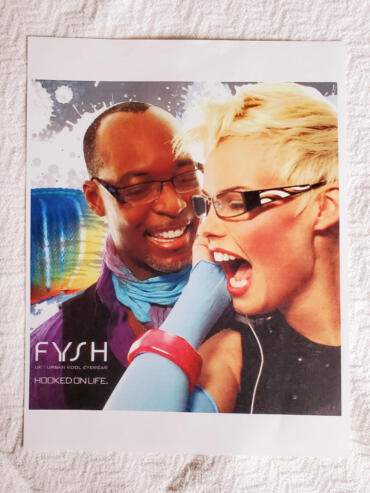June 2022
Month 20xx
Darya Soufian and Kirsten Svitich
Charmaine Gooden
Carol Martin
Picture it — mid-80s and 20-something Hondo is living in Montreal, looking for his break-through modelling gig. He travels back and forth between Montreal and Europe for modelling gigs in hopes of finding his big break. For two months he traverses Europe, going from one audition to the next, until he arrives in France.
At an agency in Paris, he picked up a casting list, and on it there were markings with the letters “NB” beside specific designers. “This didn’t mean ‘no blondes’ or ‘no brunettes’, no, it meant ‘no Blacks’,” he says matter-of-factly.
In the corner of the agency room he remembers seeing a group of Black men “huffing and puffing” because they had been rejected before they were able to audition. Flemming didn’t want to join them and he asked his agent, “Do you know for a fact that they don’t use Blacks or up until now they have not used Blacks in their show?”
Ignoring the “NB” markings, he waited in line and presented his portfolio when he got to the front. They gave him a jacket, made him walk and he got the show. A year later he was called in Montreal because they wanted him for the next season’s show.

Early Life and Career
Flemming, was born in Trinidad and Tobago to parents, Joyce and Joe. When he was young, he wasn’t certain he wanted to be a model. It would take the convincing of friends and family to inspire him to attend recruitment opportunities.
“As far as fashion is concerned, that came later because it was a cousin of mine and a couple of friends were putting that thought in my mind, saying ‘Hondo, man, you look good. You should start modelling,’ and I kind of dismissed it,” he says.
Yet, once he was involved, he couldn’t imagine doing anything else, and he did it in a way that was unique. “I developed my own style and my own way of working through fashion shows, and I learned as I went,” he says.
This is the attitude that propelled Flemming beyond his colleagues and landed him prestigious modelling jobs. From the cover of Vogue magazine to runways in Paris and Milan, he credits his success to his faith in God and confidence in himself.
Says Flemming, “I’m telling people to let your light shine and have faith. You go and you shine. People who are looking at you, people who have never even thought of using anybody Black before, may look at you and say ‘Oh, this person’s got something!”
“Back then it was a whole era of white is always right and it always will be; white is beauty,”

This special section creates a photo next to a pull-quote
Breaking Barriers
Flemming explains that when he was most involved in the fashion world, which would have been the 1980s and 90s, many agencies or recruiters had a very specific image in mind of what they wanted for a photoshoot or runway show. He talks about how people of colour were sometimes chosen only to fill a certain quota, and not because of their talent or ability.
“Back then it was a whole era of white is always right and it always will be; white is beauty,” says Flemming. Although this attitude is shifting now and diversity is being embraced, it was not always the case. He explains that being Black made it harder to break into the industry, but it never deterred him from pursuing his next project.
“It’s all about how you, as a person of colour, work through that and responds to it… yes, I’ve had some adversities in the past, but at the end of the day it’s their loss and I move on to the next one,” he states.
I’m telling people to let your light shine and have faith. You go and you shine.
People who are looking at you, people who have never even thought of using anybody Black before, may look at you and say ‘Oh, this person’s got something!’
Influence and Legacy
Hans Koechling, founder, producer and artistic director of The Image Is, worked with Flemming in the 1980s and 90s as a model and a client. They have both a professional relationship and a friendship. “[Hondo] is the kindest, sweetest man that you could work with—a real pro and wonderful personality,” says Koechling. “He was able to go to Milan and take off with the excellent work offered to him. I was very happy for him,” he adds.
Not only was this work great for Flemming himself in his personal life, but being a Black Canadian model on the cover of big magazines and walking international runways was an inspiration to others looking to do the same thing.
“When I came back home, a lot of people on the streets — Black people especially — would come up and shake my hand and thank me,” says Flemming. “They would ask me questions and be interested in getting involved because they saw I was successful.”
From Harper’s Bazaar to Vogue Italia, Flemming has graced many covers and fashion spreads. He has met other influential creatives such as Elton John and Robert Plant during his modelling career and as Flemming puts it, “It’s just champagne flowing in this life. Not many people get to enjoy it, but I had the pleasure of experiencing these things, and the basis of it all is that I had my faith in God.”
I’ve had some adversities in the past, but at the end of the day, it’s their loss and I move on to the next one.
About the authors:
No posts found!
No posts found!













